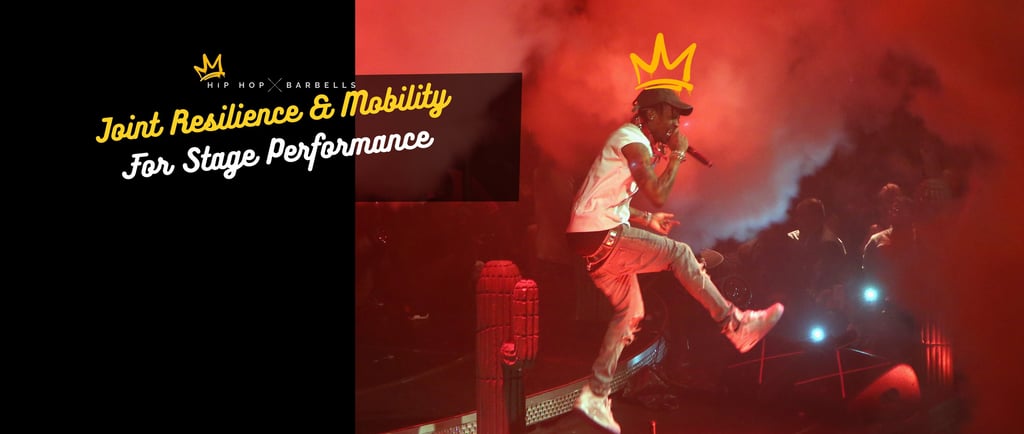Joint Resilience & Mobility for Stage Performance
Your core is more than just abs — it’s your anchor on stage and behind the decks. This guide breaks down the best core exercises for DJs, rappers, and performers to improve breath control, posture, and movement during long sets. Learn how to train your core for real-world performance — not just aesthetics.
MOBILITYJOINT HEALTH
dj miss kittie
6/30/20252 min read


Best Core Exercises for DJs & Rappers
If you’re on stage, in the booth, or behind the decks — your core isn’t just aesthetic.
It’s your anchor.
It controls your breath, supports your spine, and keeps your movement sharp and pain-free.
Let’s break down what really builds that kind of core.
Why Core Work Actually Matters
Forget crunches and sit-ups — your core is about stability and control, not simply flexion.
A strong core helps you:
Project your voice without strain
Hold positions on stage or behind gear
Prevent back pain during long sets or studio sessions
Control breath for flow and endurance.
What the Core Actually Is
It’s not just abs.
Your core includes:
Rectus Abdominis: The "six-pack" muscle, running vertically down the abdomen.
Obliques (Internal and External): These muscles run diagonally along the sides of the abdomen and are responsible for torso rotation and side bending.
Erector Spinae: A group of muscles that run along the spine, extending and rotating the trunk.
Pelvic Floor Muscles: These muscles support the pelvic organs and help stabilize the pelvis.
Diaphragm: The primary muscle of respiration, which also plays a role in core stability by creating intra-abdominal pressure.
If it helps you resist force or transfer energy — it’s core.
The core-strengthening exercises that will support your movement, breath control, and total-body power.
Deadbugs: Coordination and Control
Why It Works:
Teaches you how to move your limbs while keeping your core stable — essential for stage movement, rapping, and DJing without flaring your ribs or arching your back.
How To Do It:
Keep your low back pressed into the floor. Move opposite arm and leg while maintaining control.
Programming Tip: 3 sets of 8–10 reps per side, slow and controlled.
Pallof Press: Anti-Rotation Strength
Why It Works:
Strengthens your ability to resist unwanted movement — like twisting or collapsing under load.
Perfect for breath control and maintaining posture while moving or performing.
How To Do It:
Use a cable or band. Press straight out from your chest, hold, then return. Don’t let your torso twist.
Programming Tip: 2–3 sets of 10–12 per side, controlled tempo.
Farmer’s Carries: Real-World Core Strength
Why It Works:
This is functional core training.
Carrying heavy gear, crates, or bags? This is the move.
Teaches full-body bracing, grip strength, and posture.
How To Do It:
Hold a heavy dumbbell or kettlebell in each hand and walk 10–20 meters without leaning or swaying.
Variation:
Try suitcase carries (one side) for anti-lateral flexion.
Bonus Moves Worth Adding
Want to level it up? Add these into rotation:
Bird Dogs – core-to-glute connection
Plank Variations – endurance and brace
Glute Bridges – posterior chain activation
Side Planks – lateral strength and stability
Train 2–3 core-focused sessions per week.
The goal is control and endurance — not exhaustion.
Final Thought: Core First, Then Flow
Before you lift the mic or haul a crate, your core is already working. It’s your body’s power center; stabilizing your spine, supporting your breath, and connecting upper and lower body movements.
A strong, well-trained core isn’t about visible abs — it’s about function. It protects your back during long sets, boosts your breath control for stage performance, and helps you move with confidence, both in and out of the booth.
Build your core first — then let everything else flow.
Longevity, performance, and injury prevention all start here.
